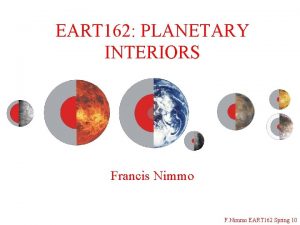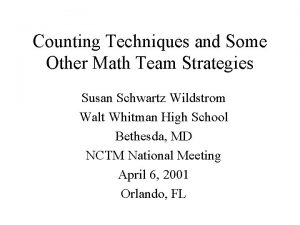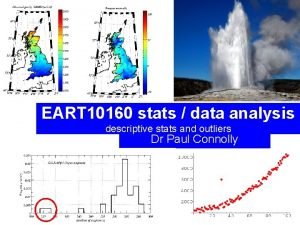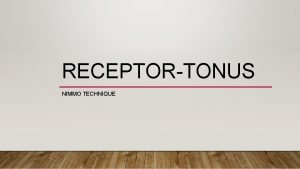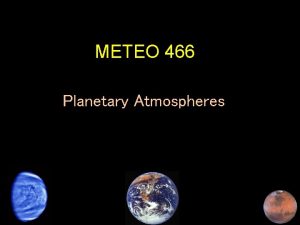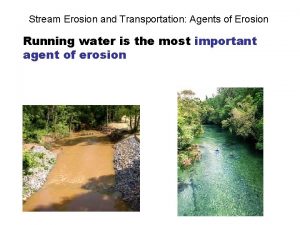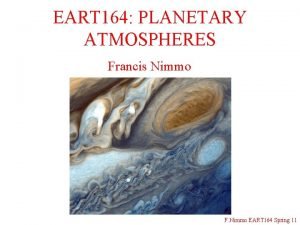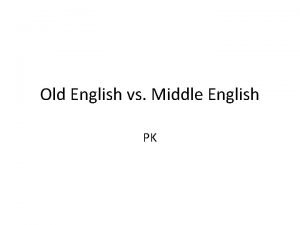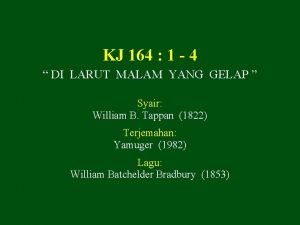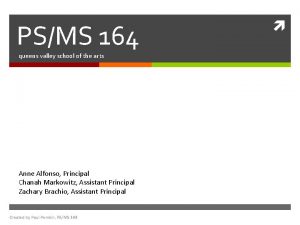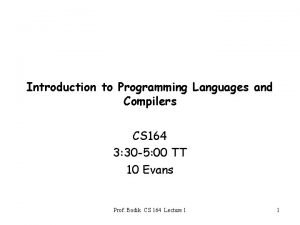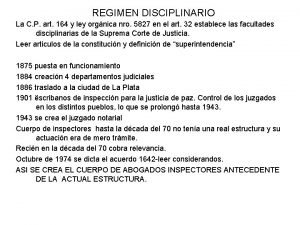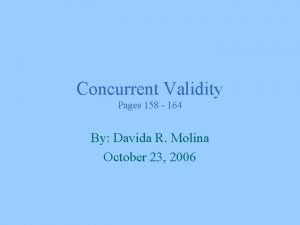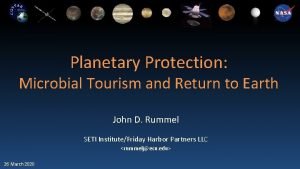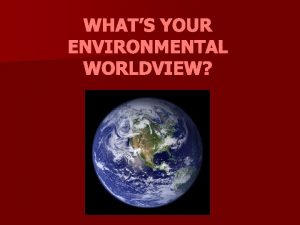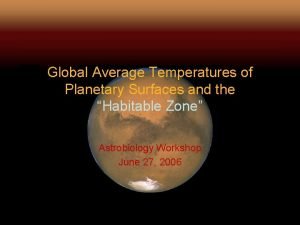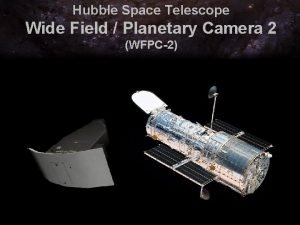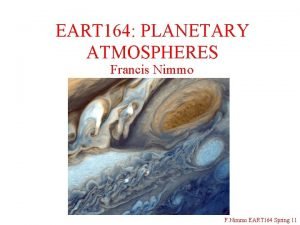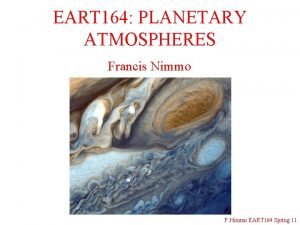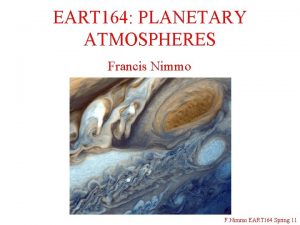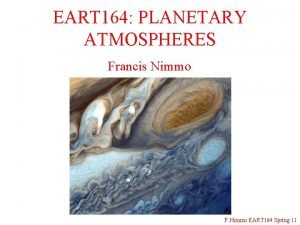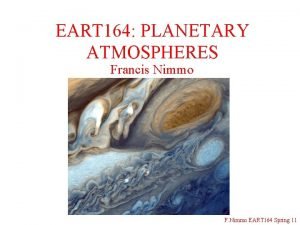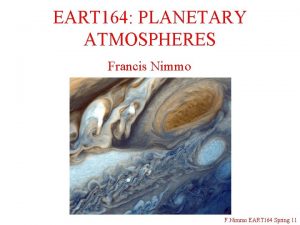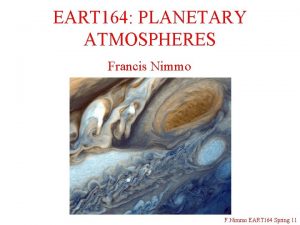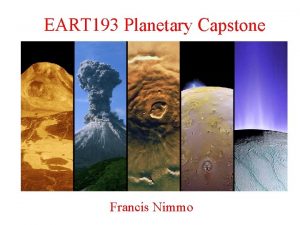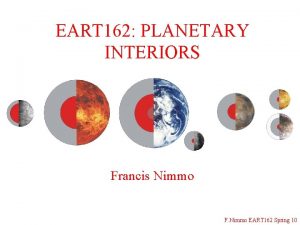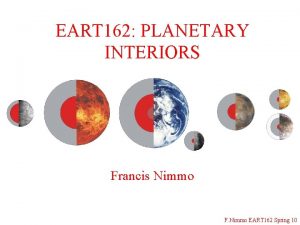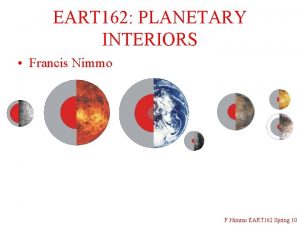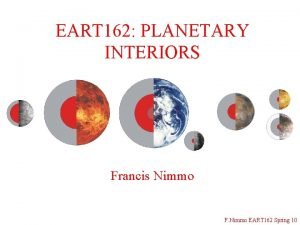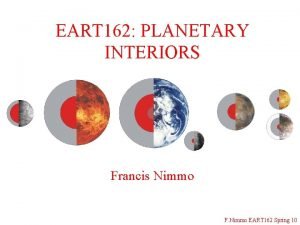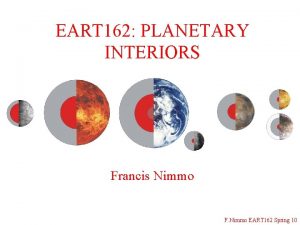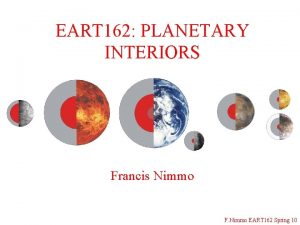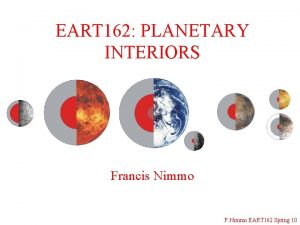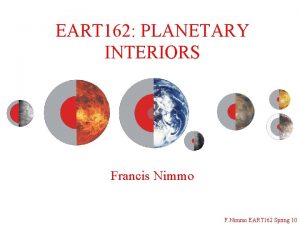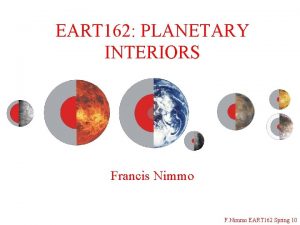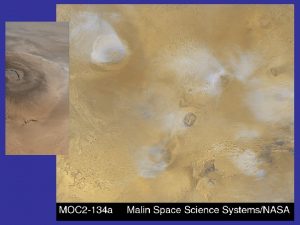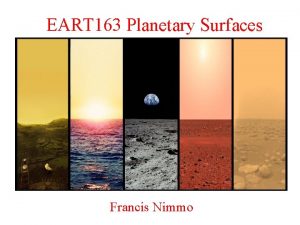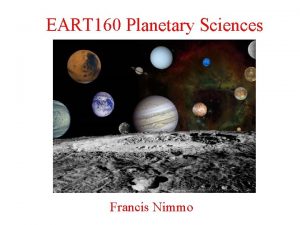EART 164 PLANETARY ATMOSPHERES Francis Nimmo F Nimmo

























- Slides: 25

EART 164: PLANETARY ATMOSPHERES Francis Nimmo F. Nimmo EART 164 Spring 11

Last Week - Chemistry • • Cycles: ozone, CO, SO 2 Photodissociation and loss (CH 4, H 2 O etc. ) D/H ratios and water loss Noble gas ratios and atmospheric loss (fractionation) Outgassing (40 Ar, 4 He) Dynamics can influence chemistry Non-solar gas giant compositions Titan’s problematic methane source F. Nimmo EART 164 Spring 11

This Week – Clouds, Hazes, Dust • Physics of cloud formation – Vapour pressure, nucleation • Clouds in practice – Mars (CO 2 + H 2 O), Venus (SO 2), Earth (H 2 O) – Titan (CH 4), Gas giants, Exoplanets • Dust • Guest lecture (Patrick Chuang) F. Nimmo EART 164 Spring 11

Schematic cloud formation T Gas Cloud base Adiabat P Solid/liquid Phase boundary Clouds may consist of either solid or liquid droplets Lapse rate gets smaller when condensation begins - why? g dz = Cp d. T + LH df LH is the latent heat F. Nimmo EART 164 Spring 11

Vapour pressure • Condensation occurs when the partial pressure of vapor in the atmosphere equals a particular value (the saturation vapor pressure Ps) defined by the phase boundary given by the Clausius-Clapeyron relation: • This gives us ln(Ps)=a-b/T • As condensation of a species proceeds, the partial pressure drops and so T will need to decrease for further condensation to proceed • What happens when you boil water at high altitude? F. Nimmo EART 164 Spring 11

Phase boundary E. g. water CL=3 x 107 bar, LH=50 k. J/mol So at 200 K, Ps=0. 3 Pa, at 250 K, Ps=100 Pa H 2 O F. Nimmo EART 164 Spring 11

Nucleation • Liquid droplets can form spontaneously from vapour (homogeneous nucleation), but it can require a large degree of supercooling • In practice, nucleation is much easier if there are contaminants (e. g. dust) present. This is heterogeneous nucleation. • In real atmospheres, nucleation sites (cloud condensation nuclei, CCN) are usually present • On Earth, pollution is one major source of CCN • CCN are much smaller than raindrops (~0. 1 mm) F. Nimmo EART 164 Spring 11

Earth Clouds Global cloud-cover, averaged over month of October 2009 Equatorial easterlies • Crudely speaking, air picks up water from the ocean and deposits it on land • Equatorial easterly winds mean that western sides of continents tend to be cloud-free and very dry What causes the equatorial easterlies (trade winds)? F. Nimmo EART 164 Spring 11

Albedo and feedback • Clouds can have an enormous impact on albedo and hence surface temperature • E. g. Venus A=0. 76 Earth A=0. 4 • Venus receives less incident radiation than Earth! • Clouds are typically not resolved in global circulation models – but can be very important • Sea surface warming will lead to more clouds, partly offsetting the warming effect • “cloud feedbacks remain the largest source of uncertainty in climate sensitivity estimates” (IPCC 2007) • How much extra cloud cover would be required to offset a 2 K increase in temperature? F. Nimmo EART 164 Spring 11

Venus O + SO 2 SO 3 H 2 O + SO 3 H 2 SO 4 (condenses) SO 2, H 2 O outgassing H 2 O + SO 3 H 2 SO 4 Thermal breakdown at 400 K H 2 SO 4 SO 3 + H 2 O Clouds consist mostly of H 2 SO 4 droplets These break down at high temperatures – lower atmosphere is cloud free F. Nimmo EART 164 Spring 11

Mars Clouds Mars Express 2004 CO 2 clouds Observed in spacecraft images Most clouds observed are water ice (very thin, cirrus-like) Do not have significant effect on global energy budget (unlike Earth) CO 2 ice clouds have also been observed F. Nimmo EART 164 Spring 11

Mars clouds CO 2 H 2 O Mars lower atmosphere Poles • CO 2 clouds form only when cold – either at high altitude (~100 km) or near poles • H 2 O is not abundant (few precipitable microns) • But H 2 O clouds are common where there is a source of water (e. g. polar caps in spring) F. Nimmo EART 164 Spring 11

Titan Atmospheric Structure Cumulus Methane ice crystals 10 km Methane rain pole 30 km Cirrus 200 km Haze layer Haze (smog) equator Clouds consist mostly of CH 4 ice & droplets Haze is a by-product of methane photochemistry high in the atmosphere (long-chain hydrocarbons), ~0. 1 mm F. Nimmo EART 164 Spring 11

Clouds & rain on Titan • Tropospheric methane clouds • North pole, 2009 (equinox) • Speeds ~ 5 m/s PIA 12811_full_ movie. mov • Patches of surface look darker after clouds form – suggests rainfall took place • Distribution of clouds is observably changing with seasons (moving past equinox) • Titan has a dynamic “hydrological” cycle F. Nimmo EART 164 Spring 11

Altitude (km) Giant planet clouds Colours are due to trace constituents, probably sulphur compounds Different cloud decks, depending on condensation temperature F. Nimmo EART 164 Spring 11

Exoplanet Clouds • • I – Ammonia (<150 K) II – Water (<250 K) III – Cloudless (>350 K) IV – Alkali Metals (>900 K) • V – Silicate (>1400 K) Sudarsky et al. 2003 Different classes of exoplanets predicted to have very different optical & spectroscopic properties depending on what cloud species are present F. Nimmo EART 164 Spring 11

Dust on Mars Dust has major control on energy budget of atmosphere F. Nimmo EART 164 Spring 11

Dust lofting & settling Global dust storms on Mars result from feedback: dust means more energy absorbed in atmosphere, local increase in wind strength, more dust lofted and so on. . . Why don’t we get global dust storms on Earth? -Oceans -Wet atmosphere helps particles flocculate Sinking timescale: Where does this come from? How do we calculate the viscosity of a gas? For Mars, h~10 -3 Pa s, H~15 km, r~10 mm so t ~few months F. Nimmo EART 164 Spring 11

Dust Devils on Mars Phoenix image Helpful in cleaning solar cells! F. Nimmo EART 164 Spring 11

Moving dunes on Mars Bridges et al. Nature 2012 F. Nimmo EART 164 Spring 11

Thermal effect of dust * Tropospheric Teq=160 K Tropospheric warming due to dust gives T=240 K (see diagram) Implies t ~5 (a bit high) Dust No dust If d=20 km and r=10 mm, r~10 -5 kg m-3. What surface thickness does this represent? 0. 2 kg/m 2 = 0. 1 mm (not a lot!) * We’ll discuss t next week (radiative transfer) F. Nimmo EART 164 Spring 11

Key concepts • • • Saturation vapour pressure, Clausius-Clapeyron Moist vs. dry adiabat Cloud albedo effects Giant planet cloud stacks Dust sinking timescale and thermal effects F. Nimmo EART 164 Spring 11

End of lecture F. Nimmo EART 164 Spring 11

• Could talk about Zahnle style water atmosphere and radiative heat loss 300 W/m 2? F. Nimmo EART 164 Spring 11

Giant planet atmospheric structure • Note position and order of cloud decks F. Nimmo EART 164 Spring 11
 Francis nimmo
Francis nimmo Googol eart
Googol eart How to plot
How to plot Eart cuff
Eart cuff Fæder ure þu þe eart on heofonum
Fæder ure þu þe eart on heofonum Meteo eart
Meteo eart Eart
Eart Eart
Eart Fæder ure þu þe eart on heofonum
Fæder ure þu þe eart on heofonum Webglsamples
Webglsamples Types of art therapy
Types of art therapy Kj 164
Kj 164 Psms 164
Psms 164 Cs 164
Cs 164 Ambits transversals primaria
Ambits transversals primaria Si ...xyz x 999=...164
Si ...xyz x 999=...164 London phone number format
London phone number format Svetasvatara upanishad chapter 6 verse 9
Svetasvatara upanishad chapter 6 verse 9 Krs 164
Krs 164 Art 164
Art 164 158+164
158+164 Planetary protection
Planetary protection Environmental wisdom worldview
Environmental wisdom worldview Planetary temperature calculator
Planetary temperature calculator Planetary model
Planetary model Wide field and planetary camera 2
Wide field and planetary camera 2
